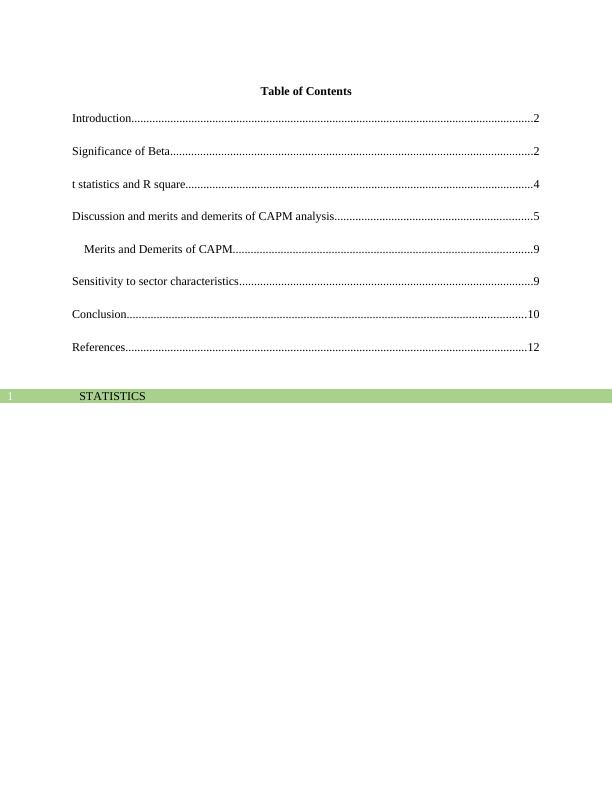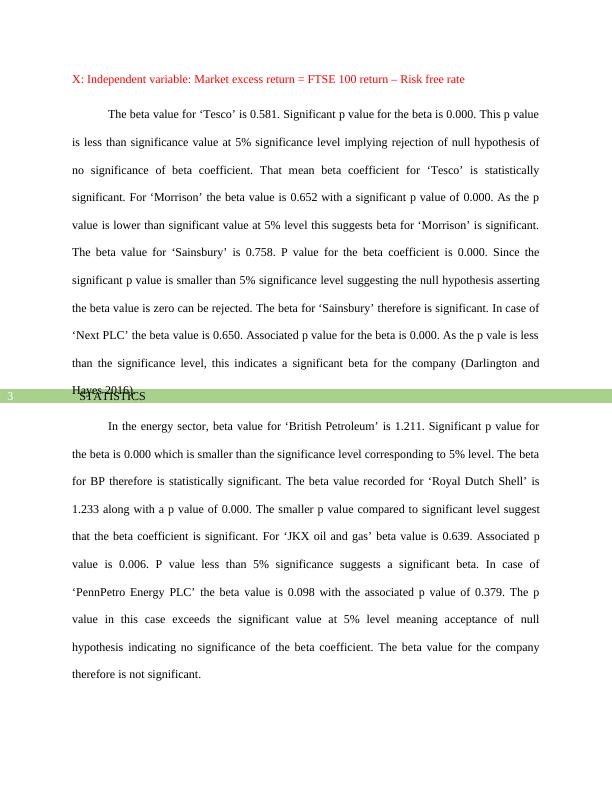CAPM Analysis of the Capital Asset Pricing
Testing the CAPM theory using market index and 12 companies' daily data from at least three different sectors.
14 Pages3300 Words18 Views
Added on 2022-08-12
About This Document
STATISTICS STATISTICS 1 1 STATISTICS Statistics Name of the Student Name of the University Course ID Introduction 2 Significance of Beta 2 t statistics and R square 4 Discussion and merits and demerits of CAPM analysis 5 Merits and Demerits of CAPM 9 Sensitivity to sector characteristics 9 Conclusion 10 References 12 Introduction The business report is prepared to test the Capital Asset Pricing Model (CAPM). The beta value is significantly smaller than the p value associated with the beta
CAPM Analysis of the Capital Asset Pricing
Testing the CAPM theory using market index and 12 companies' daily data from at least three different sectors.
Added on 2022-08-12
ShareRelated Documents
End of preview
Want to access all the pages? Upload your documents or become a member.
Testing the CAPM Theory Using Time Series Regression Analysis
|18
|3072
|254
Multiple Regression with Food Truck Case | Assignment
|9
|1106
|21
Statistics for Business and Finance - Hypothesis Testing, CAPM Model and Regression Analysis
|10
|1170
|212
Analytical Methods
|9
|560
|21
Frequency Distribution, Hypothesis Testing, Regression Analysis
|2
|757
|346
Statistics of Business & Finance
|10
|1152
|422




